 Search by Keyword
|
“NOWHERE MAN”
(John Lennon – Paul McCartney)
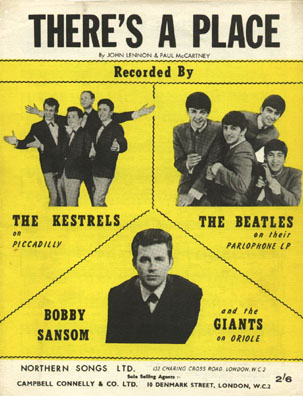 It seems hard to believe, but it’s true. As was common for pop songwriting of the late '50s and early '60s, this being the template for Lennon and McCartney’s early songwriting, the subject of choice for The Beatles’ original material always seemed to center around a relationship between a boy and a girl. Whether it was vague clichés (such as in “Love Me Do”), romantic complications (“If I Fell”), jealousy (“You Can’t Do That”) or even heartache (“Not A Second Time”), the theme of love and/or romance was always the common denominator. Even in the most unlikely of subjects, such as made-to-order songs written around the title of movies, a "love interest" is included somewhere in the lyrics. Therefore, “A Hard Day’s Night” turns the subject to “when I get home to you” and “Help!” includes the thought that he does "appreciate" her "being ‘round." Even the introspective “There’s A Place” winds up including the line “I love only you.” It seems hard to believe, but it’s true. As was common for pop songwriting of the late '50s and early '60s, this being the template for Lennon and McCartney’s early songwriting, the subject of choice for The Beatles’ original material always seemed to center around a relationship between a boy and a girl. Whether it was vague clichés (such as in “Love Me Do”), romantic complications (“If I Fell”), jealousy (“You Can’t Do That”) or even heartache (“Not A Second Time”), the theme of love and/or romance was always the common denominator. Even in the most unlikely of subjects, such as made-to-order songs written around the title of movies, a "love interest" is included somewhere in the lyrics. Therefore, “A Hard Day’s Night” turns the subject to “when I get home to you” and “Help!” includes the thought that he does "appreciate" her "being ‘round." Even the introspective “There’s A Place” winds up including the line “I love only you.”
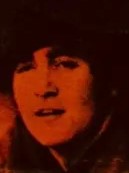 This being said and having tabulated everything up, the facts show that every Lennon / McCartney song up until late 1965 concerned a relationship of some sort. Indeed, the time had finally come to branch out and John Lennon was the one to do it. While most of the compositions they wrote and recorded in 1966 avoided the "love" subject entirely, Lennon’s 1965 masterpiece “Nowhere Man” was the first to break the mold. The floodgates then appeared to be thrown open to anything and everything! This being said and having tabulated everything up, the facts show that every Lennon / McCartney song up until late 1965 concerned a relationship of some sort. Indeed, the time had finally come to branch out and John Lennon was the one to do it. While most of the compositions they wrote and recorded in 1966 avoided the "love" subject entirely, Lennon’s 1965 masterpiece “Nowhere Man” was the first to break the mold. The floodgates then appeared to be thrown open to anything and everything!
Songwriting History
“’Nowhere Man’ was one of John’s, coming from a big night the night before and getting to bed about five in the morning…with dawn coming up,” explained Paul.
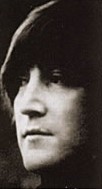 John himself gave a few recollections of writing the song on different occasions, the first in 1967 in which he struggled to remember it clearly: “I was just sitting, trying to think, and I thought of myself sitting there, doing nothing and going nowhere. Once I’d thought of that, it was easy, it all came out. – No, I remember now; I’d actually stopped trying to think of something. Nothing would come. I was cheesed off and went for a lie down, having given up. Then I thought of myself as Nowhere Man – sitting in this Nowhere Land.” John himself gave a few recollections of writing the song on different occasions, the first in 1967 in which he struggled to remember it clearly: “I was just sitting, trying to think, and I thought of myself sitting there, doing nothing and going nowhere. Once I’d thought of that, it was easy, it all came out. – No, I remember now; I’d actually stopped trying to think of something. Nothing would come. I was cheesed off and went for a lie down, having given up. Then I thought of myself as Nowhere Man – sitting in this Nowhere Land.”
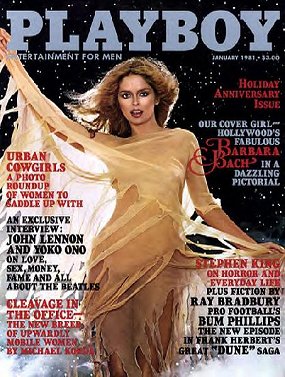 Thirteen years later, during his 1980 Playboy Magazine interview, his remembrance was more defined: “I’d spent five hours that morning trying to write a song that was meaningful and good, and I finally gave up and lay down. Then ‘Nowhere Man’ came, words and music, the whole damn thing, as I lay down…So letting it go is what the whole game is. You put your finger on it, it slips away, right? Y'know, you turn the lights on and the cockroaches run away. You can never grasp them.” Thirteen years later, during his 1980 Playboy Magazine interview, his remembrance was more defined: “I’d spent five hours that morning trying to write a song that was meaningful and good, and I finally gave up and lay down. Then ‘Nowhere Man’ came, words and music, the whole damn thing, as I lay down…So letting it go is what the whole game is. You put your finger on it, it slips away, right? Y'know, you turn the lights on and the cockroaches run away. You can never grasp them.”
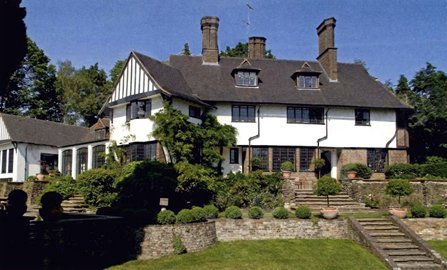 Paul relates that the song was premiered to him during a writing session at John’s Kenwood home the next day. “When I came out to write with him the next day, he was kipping on the couch, very bleary-eyed…That was a great one. He said, ‘I started one last night’…He treated it as a third-person song, but he was clever enough to say, ‘Isn’t he a bit like you and me?’; ‘Me’ being the final word. That was one of John’s better ones.” Paul relates that the song was premiered to him during a writing session at John’s Kenwood home the next day. “When I came out to write with him the next day, he was kipping on the couch, very bleary-eyed…That was a great one. He said, ‘I started one last night’…He treated it as a third-person song, but he was clever enough to say, ‘Isn’t he a bit like you and me?’; ‘Me’ being the final word. That was one of John’s better ones.”
 As to whether Paul was involved in the writing at all, there is some disparity. John stated in the 1972 Hit Parader magazine that he was the composer of the song while, as mentioned above, he told Playboy in 1980 that he wrote “the whole damn thing.” Paul states in his book “Many Years From Now” that “it was really an anti-John song, written by John,” as if he had nothing to do with it at all. However, Paul was also quoted as saying “I maybe helped him with a word here or there, but he’d already got most of it.” As to whether Paul was involved in the writing at all, there is some disparity. John stated in the 1972 Hit Parader magazine that he was the composer of the song while, as mentioned above, he told Playboy in 1980 that he wrote “the whole damn thing.” Paul states in his book “Many Years From Now” that “it was really an anti-John song, written by John,” as if he had nothing to do with it at all. However, Paul was also quoted as saying “I maybe helped him with a word here or there, but he’d already got most of it.”
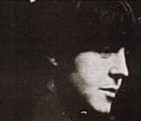 Also, when he was illustrating the songwriting dynamic between him and John, Paul gave this as an illustration: “Nobody ever had any notes written down; we just used to sing a tune and it would come out good. Part of the secret collaboration was that we liked each other. We liked singing at each other. He’d sing something and I’d say, ‘Yeah,’ and trade off on that. He’d say, ‘Nowhere land,’ and I’d say, ‘For nobody.’ It was a two-way thing.” Whether this was just an illustration or an actual recollection of this particular song being written is hard to say and left for our interpretation. Also, when he was illustrating the songwriting dynamic between him and John, Paul gave this as an illustration: “Nobody ever had any notes written down; we just used to sing a tune and it would come out good. Part of the secret collaboration was that we liked each other. We liked singing at each other. He’d sing something and I’d say, ‘Yeah,’ and trade off on that. He’d say, ‘Nowhere land,’ and I’d say, ‘For nobody.’ It was a two-way thing.” Whether this was just an illustration or an actual recollection of this particular song being written is hard to say and left for our interpretation.
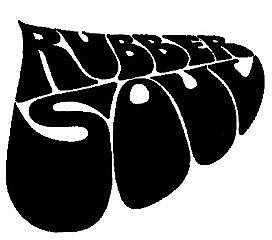 As to the time of writing, it can easily be estimated to have been written sometime in September or early October of 1965. They had just ended their second American tour on August 31st and were to spend until October 12th, their next scheduled recording session, recuperating and writing material for what became the “Rubber Soul” album. As to the time of writing, it can easily be estimated to have been written sometime in September or early October of 1965. They had just ended their second American tour on August 31st and were to spend until October 12th, their next scheduled recording session, recuperating and writing material for what became the “Rubber Soul” album.
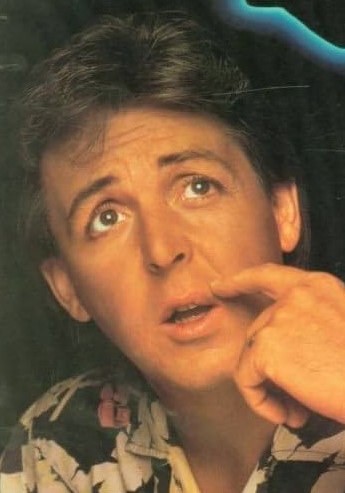 As to the subject matter of the song “Nowhere Man,” Paul’s opinions have varied throughout the years. He once stated, “It turned out later that it was about me: ‘He’s a real nowhere man…’” However, in “Many Years From Now,” he relates: “He told me later, he didn’t tell me then, he said he’d written it about himself, feeling like he wasn’t going anywhere. I think actually it was about the state of his marriage. It was in a period where he was a bit dissatisfied with what was going on; however, it led to a very good song.” Putting this interpretation in a nutshell, Paul explained in 1994, “I think at that point in his life, he was wondering where he was going.” As to the subject matter of the song “Nowhere Man,” Paul’s opinions have varied throughout the years. He once stated, “It turned out later that it was about me: ‘He’s a real nowhere man…’” However, in “Many Years From Now,” he relates: “He told me later, he didn’t tell me then, he said he’d written it about himself, feeling like he wasn’t going anywhere. I think actually it was about the state of his marriage. It was in a period where he was a bit dissatisfied with what was going on; however, it led to a very good song.” Putting this interpretation in a nutshell, Paul explained in 1994, “I think at that point in his life, he was wondering where he was going.”
Recording History
 On October 21st, 1965, The Beatles' sixth day of recording sessions for their album “Rubber Soul,” the group entered EMI Studio Two at 2:30 pm to re-record “Norwegian Wood.” At 7 pm, this song was deemed complete and they then turned their attention to the newly written “Nowhere Man.” On October 21st, 1965, The Beatles' sixth day of recording sessions for their album “Rubber Soul,” the group entered EMI Studio Two at 2:30 pm to re-record “Norwegian Wood.” At 7 pm, this song was deemed complete and they then turned their attention to the newly written “Nowhere Man.”
 After rehearsing the song for awhile, they started recording the rhythm track, although it did not get very far. Onto track one of the four-track tape was John playing his Gibson "Jumbo" acoustic guitar, Paul's bass, Ringo's drums, and George on his Rickenbacker 12-string guitar playing in a similar style to what he had performed less than a week before on his song "If I Needed Someone," which displayed by his recent infatuation with American group The Byrds. Onto track three of the tape was recorded what Mark Lewisohn describes in his book "The Beatles Recordings Sessions" as "an elaborate...idea to introduce the song with high register three-part harmony work by John, Paul and George," these only appearing a cappella in the first half of verse one before their instruments appear. These harmonies were sung with more fluidity than what we're used to hearing on the completed version, these being sung utilizing a more straightforward quarter-note pattern. After rehearsing the song for awhile, they started recording the rhythm track, although it did not get very far. Onto track one of the four-track tape was John playing his Gibson "Jumbo" acoustic guitar, Paul's bass, Ringo's drums, and George on his Rickenbacker 12-string guitar playing in a similar style to what he had performed less than a week before on his song "If I Needed Someone," which displayed by his recent infatuation with American group The Byrds. Onto track three of the tape was recorded what Mark Lewisohn describes in his book "The Beatles Recordings Sessions" as "an elaborate...idea to introduce the song with high register three-part harmony work by John, Paul and George," these only appearing a cappella in the first half of verse one before their instruments appear. These harmonies were sung with more fluidity than what we're used to hearing on the completed version, these being sung utilizing a more straightforward quarter-note pattern.
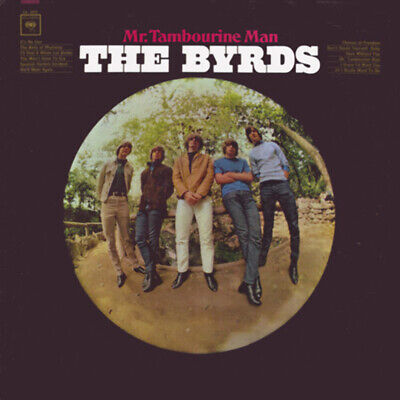 "Take one" was an immediate false start but "take two," which was counted off by Paul, progressed to the completion of the arrangement that they had decided upon at that point and unfortunately features George picking clumsily in a Byrds-like fashion. For this arrangement, there was only one verse designated for the song's beginning, while the instrumental section was positioned in a more conventional location just after the mid-way point of the song. By midnight the session was over, it being apparent that the group needed to rethink the arrangement and start from scratch on another day. Therefore, nothing from this recording session made it onto the finished master. "Take one" was an immediate false start but "take two," which was counted off by Paul, progressed to the completion of the arrangement that they had decided upon at that point and unfortunately features George picking clumsily in a Byrds-like fashion. For this arrangement, there was only one verse designated for the song's beginning, while the instrumental section was positioned in a more conventional location just after the mid-way point of the song. By midnight the session was over, it being apparent that the group needed to rethink the arrangement and start from scratch on another day. Therefore, nothing from this recording session made it onto the finished master.
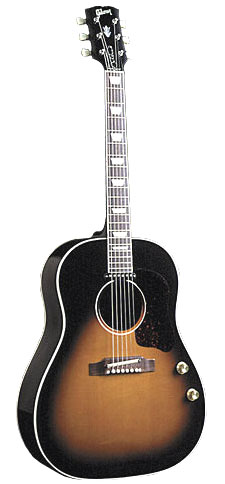 The next day, October 22nd, 1965, The Beatles were back in EMI Studio Two at 2:30 to begin a nine hour session for re-recording “Nowhere Man.” Their first four-and-a-half hours (or until 7 pm) concentrated on rehearsals and nailing down their rhythm track. Three takes were put down, "take three" through "take five," with John on acoustic rhythm guitar, Paul on bass and Ringo on drums. Since only one acoustic guitar is present, George appears to have sat out altogether on the rhythm track, a decision apparently being made that his 12-string Byrds-inspired idea wasn't suitable for this song. "Take four" was deemed best and ready for overdubs. The next day, October 22nd, 1965, The Beatles were back in EMI Studio Two at 2:30 to begin a nine hour session for re-recording “Nowhere Man.” Their first four-and-a-half hours (or until 7 pm) concentrated on rehearsals and nailing down their rhythm track. Three takes were put down, "take three" through "take five," with John on acoustic rhythm guitar, Paul on bass and Ringo on drums. Since only one acoustic guitar is present, George appears to have sat out altogether on the rhythm track, a decision apparently being made that his 12-string Byrds-inspired idea wasn't suitable for this song. "Take four" was deemed best and ready for overdubs.
 At 7 pm these overdubs began, which focused first of all on John, Paul and George’s vocal harmonies through the song. No doubt with the help of George Martin’s arranging skills, these were perfected at this session. After John, Paul and George recorded their vocal performances, they all double-tracked their vocals afterwards in order to add some further depth, since these vocals turn out to be the primary focus of the song. George also overdubbed electric lead guitar phrases at the end of each verse and bridge. At 7 pm these overdubs began, which focused first of all on John, Paul and George’s vocal harmonies through the song. No doubt with the help of George Martin’s arranging skills, these were perfected at this session. After John, Paul and George recorded their vocal performances, they all double-tracked their vocals afterwards in order to add some further depth, since these vocals turn out to be the primary focus of the song. George also overdubbed electric lead guitar phrases at the end of each verse and bridge.
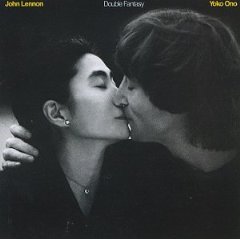 Then it became the time for the guitar solo overdub. Guitarist Earl Slick received some firsthand insight from John Lennon himself regarding the recording of this solo during the sessions for the classic album “Double Fantasy.” “John was pulling little Beatle tricks out of a hat,” explained Earl Slick as quoted in Ken Sharp’s 2010 book “Starting Over,” continuing, “Apparently, he and George (Harrison) played a solo together on ‘Nowhere Man’ through two small amps and there was a microphone sitting between the amps. So that’s what we did.” Following John’s suggestion, Earl Slick and fellow guitarist Hugh McCracken recorded the guitar solo for John’s “I’m Losing You” in this same way. Then it became the time for the guitar solo overdub. Guitarist Earl Slick received some firsthand insight from John Lennon himself regarding the recording of this solo during the sessions for the classic album “Double Fantasy.” “John was pulling little Beatle tricks out of a hat,” explained Earl Slick as quoted in Ken Sharp’s 2010 book “Starting Over,” continuing, “Apparently, he and George (Harrison) played a solo together on ‘Nowhere Man’ through two small amps and there was a microphone sitting between the amps. So that’s what we did.” Following John’s suggestion, Earl Slick and fellow guitarist Hugh McCracken recorded the guitar solo for John’s “I’m Losing You” in this same way.
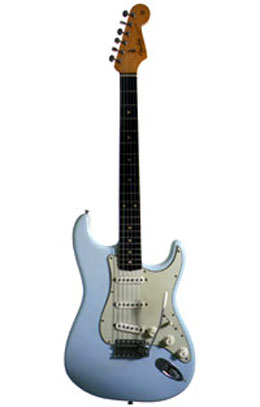 As for “Nowhere Man,” the guitar solo was performed by both John and George in unison on their identical Sonic Blue Fender Stratocasters. In the 1995 book “The Story Of The Fender Stratocaster,” George Harrison corroborates Earl Slick’s story by explaining, “I decided I’d get a Strat, and John decided he’d get one too. So we sent out our roadie, Mal Evans, said go and get us two Strats. And he came back with two of them, pale blue ones. Straight away we used them on the album we were making at the time, which was ‘Rubber Soul.’ I played it a lot on that album, (most noticeably) the solo on ‘Nowhere Man’ which John and I both played in unison.” George then added the final touch to the solo by adding a harmonic to ring out into the next verse. (Documentation and photographic evidence indicates, however, that George and John had received their Stratocasters by February of 1965, the Strat sound being evident on "Ticket To Ride" from the "Help!" album.) As for “Nowhere Man,” the guitar solo was performed by both John and George in unison on their identical Sonic Blue Fender Stratocasters. In the 1995 book “The Story Of The Fender Stratocaster,” George Harrison corroborates Earl Slick’s story by explaining, “I decided I’d get a Strat, and John decided he’d get one too. So we sent out our roadie, Mal Evans, said go and get us two Strats. And he came back with two of them, pale blue ones. Straight away we used them on the album we were making at the time, which was ‘Rubber Soul.’ I played it a lot on that album, (most noticeably) the solo on ‘Nowhere Man’ which John and I both played in unison.” George then added the final touch to the solo by adding a harmonic to ring out into the next verse. (Documentation and photographic evidence indicates, however, that George and John had received their Stratocasters by February of 1965, the Strat sound being evident on "Ticket To Ride" from the "Help!" album.)
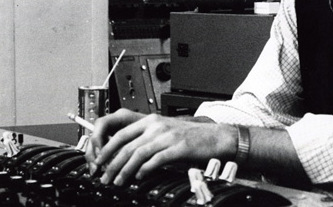 Being in an experimental mood in the studio and always wanting to try new things, they suggested having a more brash sound for the guitar solo. In the 1988 book “The Beatles Recording Sessions,” Paul McCartney explained: "I remember we wanted very treble-y guitars – which they are – they’re among the most treble-y guitars I’ve ever heard on record. The engineer said, ‘Alright, I’ll put full treble on it,’ and we said, ‘That’s not enough,’ and he said, ‘That’s all I’ve got, I’ve only got one pot and that’s it!’ And we replied, ‘Well, put that through another lot of faders and put full treble up on that. And if that’s not enough we’ll go through another lot of faders and…’ so we were always doing that, forcing them. They said, ‘We don’t do that,’ and we would say, ‘Try it. Just try it for us. If it sounds crappy, OK, we’ll lose it, but it just might sound good.’ I always wanted things to be different because we knew that people, generally, always want to move on, and if we hadn’t pushed them the guys would have stuck by the rule books and still been wearing ties. Anyway you’d then find, ‘Oh, it worked!,’ and they were secretly glad because they had been the engineer who put three times the allowed value of treble on a song. I think they were quietly proud of those things." Being in an experimental mood in the studio and always wanting to try new things, they suggested having a more brash sound for the guitar solo. In the 1988 book “The Beatles Recording Sessions,” Paul McCartney explained: "I remember we wanted very treble-y guitars – which they are – they’re among the most treble-y guitars I’ve ever heard on record. The engineer said, ‘Alright, I’ll put full treble on it,’ and we said, ‘That’s not enough,’ and he said, ‘That’s all I’ve got, I’ve only got one pot and that’s it!’ And we replied, ‘Well, put that through another lot of faders and put full treble up on that. And if that’s not enough we’ll go through another lot of faders and…’ so we were always doing that, forcing them. They said, ‘We don’t do that,’ and we would say, ‘Try it. Just try it for us. If it sounds crappy, OK, we’ll lose it, but it just might sound good.’ I always wanted things to be different because we knew that people, generally, always want to move on, and if we hadn’t pushed them the guys would have stuck by the rule books and still been wearing ties. Anyway you’d then find, ‘Oh, it worked!,’ and they were secretly glad because they had been the engineer who put three times the allowed value of treble on a song. I think they were quietly proud of those things."
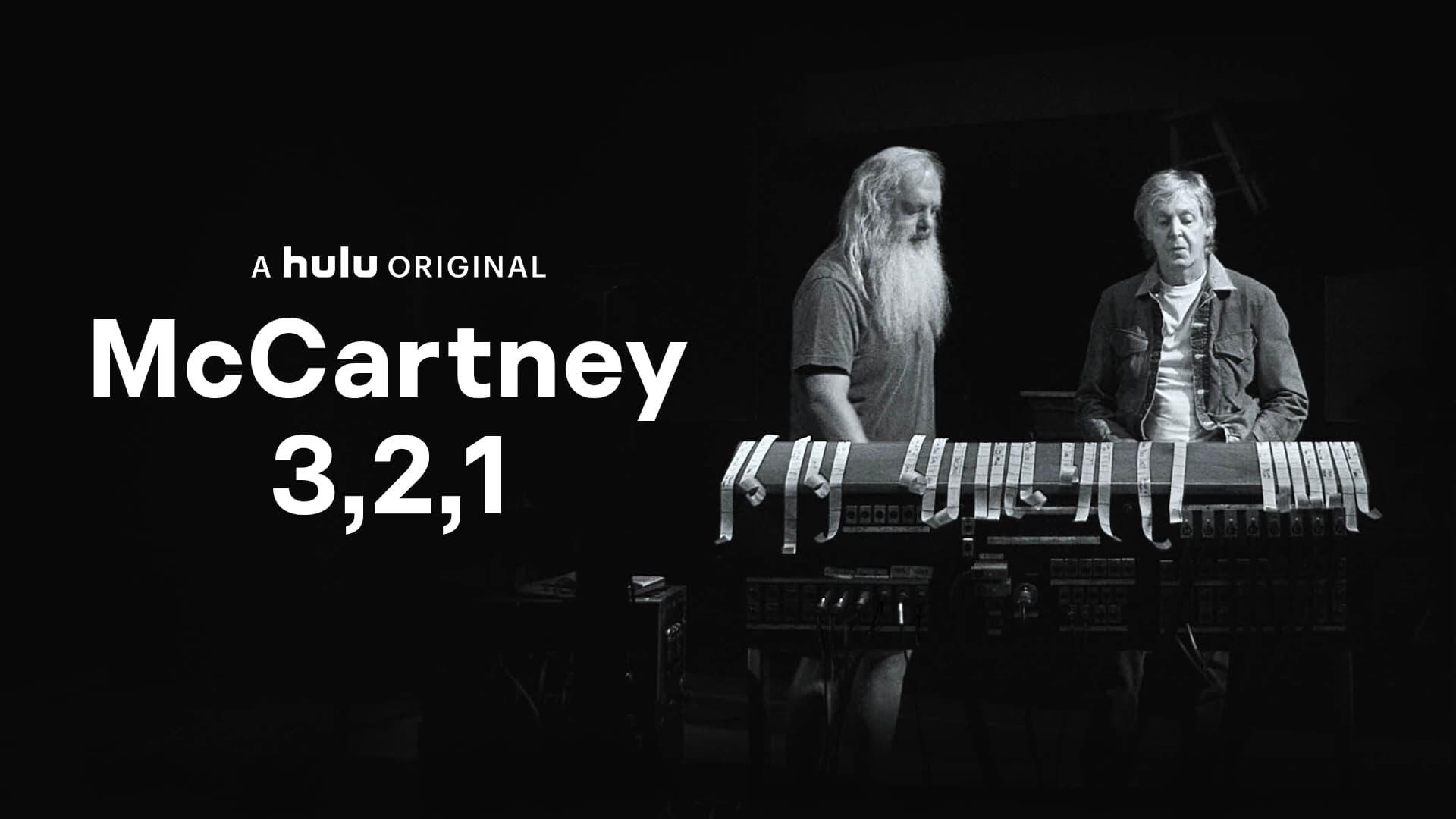 In Paul's 2021 Hulu documentary series "McCartney 3,2,1," he detailed their attitude regarding experimentation in general, "Nowhere Man" being an early example. "For us, the worst thing was to be bored. We're young, twenty-year-olds, and we've already got some success. So, we've got the excitement of youth and the, sort of, speed of youth, and a lot of the engineers have come up with us. So they knew how stupid we were, and how cheeky we were, and how ambitious we are, and it rubbed off. You know, saying to 'em, 'c'mon, get more of this, more of this, more of this.' And they'd kind of get a little look on their face like we're all naughty boys in the studio. 'We're going to actually break a few rules here.' And if it worked, we'd go 'Yes!'...We started to have a bit more freedom and allow ourselves more freedom, and George Martin allowed us more freedom. So we could then push the envelope a bit." In Paul's 2021 Hulu documentary series "McCartney 3,2,1," he detailed their attitude regarding experimentation in general, "Nowhere Man" being an early example. "For us, the worst thing was to be bored. We're young, twenty-year-olds, and we've already got some success. So, we've got the excitement of youth and the, sort of, speed of youth, and a lot of the engineers have come up with us. So they knew how stupid we were, and how cheeky we were, and how ambitious we are, and it rubbed off. You know, saying to 'em, 'c'mon, get more of this, more of this, more of this.' And they'd kind of get a little look on their face like we're all naughty boys in the studio. 'We're going to actually break a few rules here.' And if it worked, we'd go 'Yes!'...We started to have a bit more freedom and allow ourselves more freedom, and George Martin allowed us more freedom. So we could then push the envelope a bit."
By 11:30 pm the song was complete and added to the other five songs they had ready for the album, not to mention both sides of their next single. Another masterpiece was created in two days.
 The mono mix was made on October 25th, 1965 in the control room of EMI Studio Two by George Martin and engineers Norman Smith and Ken Scott. A slight touch of reverb was added to the instruments, while the vocal tracks were left very dry. The "Rubber Soul" running order at this point placed "Nowhere Man" as the second song of side one after "Drive My Car," this being an interesting combination that they decided against later. The mono mix was made on October 25th, 1965 in the control room of EMI Studio Two by George Martin and engineers Norman Smith and Ken Scott. A slight touch of reverb was added to the instruments, while the vocal tracks were left very dry. The "Rubber Soul" running order at this point placed "Nowhere Man" as the second song of side one after "Drive My Car," this being an interesting combination that they decided against later.
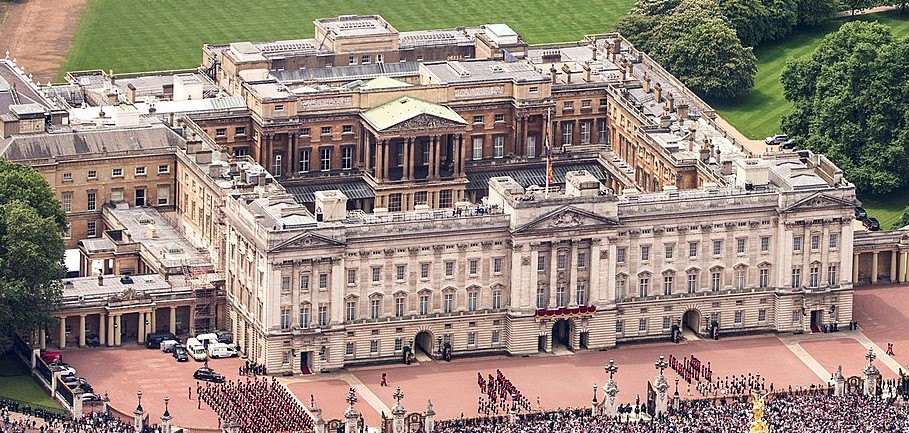 The first stereo mix was created on October 26th, 1965, while The Beatles were busy receiving their MBE’s at Buckingham Palace. George Martin, Norman Smith and second engineer Ron Pender entered the control room of EMI Studio Two to create this mix, which drastically divided the sounds between the two channels. The rhythm track was entirely on the left channel and all the overdubs (vocals and guitar solo) are on the right channel. With a little reverb added here to all of the elements, the vocals as well, this was a very straightforward mix that was made very quickly and with not much thought. After all, not too many record buyers were going to hear this anyway, right? The first stereo mix was created on October 26th, 1965, while The Beatles were busy receiving their MBE’s at Buckingham Palace. George Martin, Norman Smith and second engineer Ron Pender entered the control room of EMI Studio Two to create this mix, which drastically divided the sounds between the two channels. The rhythm track was entirely on the left channel and all the overdubs (vocals and guitar solo) are on the right channel. With a little reverb added here to all of the elements, the vocals as well, this was a very straightforward mix that was made very quickly and with not much thought. After all, not too many record buyers were going to hear this anyway, right?
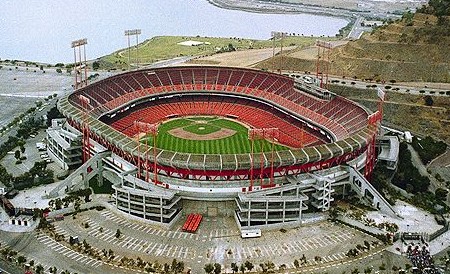 Interestingly, The Beatles' final live performance on August 29th, 1966 at Candlestick Park included "Nowhere Man," introduced by John as "from our BBC album." As detailed in Keith Badman's book "The Beatles Off The Record," the group's press officer Tony Barrow recalls: "There was a sort of end of term spirit thing going on, and there was also this kind of feeling amongst all of us around The Beatles, that this might just be the last concert that they will ever do. I remember Paul, casually, at the very last minute, saying, 'Have you got your cassette recorder with you?' and I said, 'Yes, of course.' Paul then said, 'Tape it, will you? Tape the show,' which I did, literally just holding the microphone up in the middle of the field. As a personal souvenir of the occasion, it was a very nice thing to have." Even though Tony Barrow insists that he only made one copy of the tape, which he had locked in a drawer in his London office, and gave the original to Paul, this recording has been available on bootleg releases throughout the years. Interestingly, The Beatles' final live performance on August 29th, 1966 at Candlestick Park included "Nowhere Man," introduced by John as "from our BBC album." As detailed in Keith Badman's book "The Beatles Off The Record," the group's press officer Tony Barrow recalls: "There was a sort of end of term spirit thing going on, and there was also this kind of feeling amongst all of us around The Beatles, that this might just be the last concert that they will ever do. I remember Paul, casually, at the very last minute, saying, 'Have you got your cassette recorder with you?' and I said, 'Yes, of course.' Paul then said, 'Tape it, will you? Tape the show,' which I did, literally just holding the microphone up in the middle of the field. As a personal souvenir of the occasion, it was a very nice thing to have." Even though Tony Barrow insists that he only made one copy of the tape, which he had locked in a drawer in his London office, and gave the original to Paul, this recording has been available on bootleg releases throughout the years.
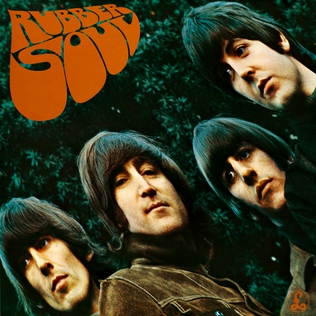 In 1986, after many millions of stereo copies of this album have been sold throughout the world, an embarrassed George Martin decides to dig out the master tapes of the entire British “Rubber Soul” album to create more suitable stereo mixes for the upcoming compact disc release of the album. He adds a substantial amount of extra reverb to the vocals in the a cappella introduction (which cut down drastically after the words “doesn’t have a point of view”) and pans the harmony vocals a little more to the left so that they're not just heard in the right channel as on the 1965 stereo mix. The lead vocal overdub from John, however, remains fully to the right channel so John’s vocals in the bridges of the song appear single tracked if you listen to the left channel by itself. The rhythm track is now slightly panned to the right but George’s overdubbed guitar phrases at the end of each verse and bridge are still fully on the left channel. John and George’s guitar solo is still fully in the right channel as it was before. In 1986, after many millions of stereo copies of this album have been sold throughout the world, an embarrassed George Martin decides to dig out the master tapes of the entire British “Rubber Soul” album to create more suitable stereo mixes for the upcoming compact disc release of the album. He adds a substantial amount of extra reverb to the vocals in the a cappella introduction (which cut down drastically after the words “doesn’t have a point of view”) and pans the harmony vocals a little more to the left so that they're not just heard in the right channel as on the 1965 stereo mix. The lead vocal overdub from John, however, remains fully to the right channel so John’s vocals in the bridges of the song appear single tracked if you listen to the left channel by itself. The rhythm track is now slightly panned to the right but George’s overdubbed guitar phrases at the end of each verse and bridge are still fully on the left channel. John and George’s guitar solo is still fully in the right channel as it was before.
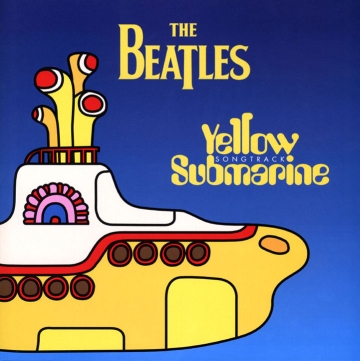 Sometime in 1999, a further improvement was made to the stereo mix in EMI Studios (now Abbey Road Studios) by engineers Peter Cobbin, Paul Hicks, Mirek Stiles and Allan Rouse. This mix, created for the re-release of the “Yellow Submarine” film and subsequent compact disc release, is noteworthy for the separation of the double-tracked vocals: one set of lead and harmony vocals on the left channel and the other set on the right channel, a bit of reverb being added to both channels. The rhythm track is centered in the mix while all of the lead guitar work is panned mostly to the right channel. Sometime in 1999, a further improvement was made to the stereo mix in EMI Studios (now Abbey Road Studios) by engineers Peter Cobbin, Paul Hicks, Mirek Stiles and Allan Rouse. This mix, created for the re-release of the “Yellow Submarine” film and subsequent compact disc release, is noteworthy for the separation of the double-tracked vocals: one set of lead and harmony vocals on the left channel and the other set on the right channel, a bit of reverb being added to both channels. The rhythm track is centered in the mix while all of the lead guitar work is panned mostly to the right channel.
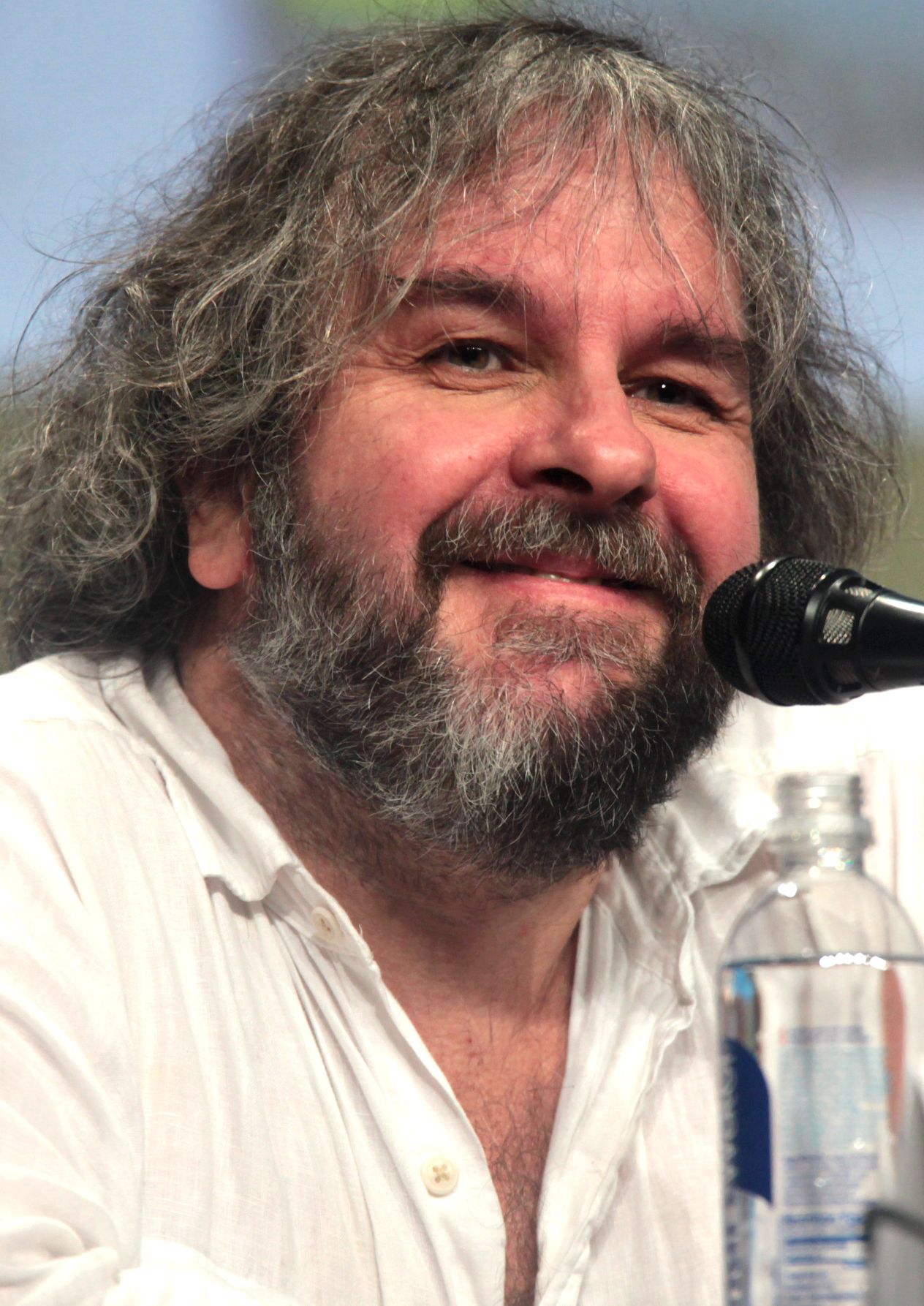 Sometime in 2023, Giles Martin was given the task of creating a "demix remix" of the song "Nowhere Man" for inclusion on the 50th Anniversary edition of the compilation album "The Beatles / 1962 - 1966" ("The Red Album"). With Peter Jackson's AI technology at his disposal, Giles Martin had the ability to utilize this "new machine-learning techology" so that "individual elements that were put to tape...and were therefore impossible to separate" could be "untangled, allowing Giles to put the original recordings back together with even greater clarity and impact," as stated by John Harris in the liner notes of the above mentioned album. While the "clarity and impact" is evident in this new "demix remix," excellent placement of all elements making for a satisfying listening experience, the absence of any reverb in the vocals indicate that Peter Jackson used the 1965 mono version in order to apply his AI technology, this being the only mix originally created without any reverb. This omission of reverb, especially evident in the a cappella introduction of the song, makes for a startling listening experience for many Beatles fans. Sometime in 2023, Giles Martin was given the task of creating a "demix remix" of the song "Nowhere Man" for inclusion on the 50th Anniversary edition of the compilation album "The Beatles / 1962 - 1966" ("The Red Album"). With Peter Jackson's AI technology at his disposal, Giles Martin had the ability to utilize this "new machine-learning techology" so that "individual elements that were put to tape...and were therefore impossible to separate" could be "untangled, allowing Giles to put the original recordings back together with even greater clarity and impact," as stated by John Harris in the liner notes of the above mentioned album. While the "clarity and impact" is evident in this new "demix remix," excellent placement of all elements making for a satisfying listening experience, the absence of any reverb in the vocals indicate that Peter Jackson used the 1965 mono version in order to apply his AI technology, this being the only mix originally created without any reverb. This omission of reverb, especially evident in the a cappella introduction of the song, makes for a startling listening experience for many Beatles fans.
 Sometime during 2025, Giles Martin, with engineers Joe Wyatt and Greg McAllister, created a mix of "take two" of the original EMI sessions of "Nowhere Man" for inclusion on "Anthology 4," this LP being released in various editions in 2025 as detailed below. Sometime during 2025, Giles Martin, with engineers Joe Wyatt and Greg McAllister, created a mix of "take two" of the original EMI sessions of "Nowhere Man" for inclusion on "Anthology 4," this LP being released in various editions in 2025 as detailed below.
Song Structure and Style
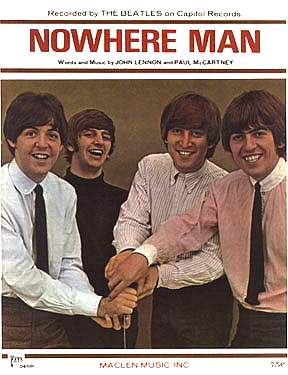 A good degree of the riveting appeal exuded by the song “Nowhere Man” can be found in its simplicity. The structure itself is a prime example, basically being a juggling back and forth of verses and bridges. This results in a ‘verse/ verse/ bridge/ verse (solo)/ verse/ bridge/ verse/ bridge/ verse’ format (or aabaababa). The melody line on display here is also quite simple, focusing primarily on quarter notes sung on the beat as its backbone while also using their usual syncopation more sparingly. A good degree of the riveting appeal exuded by the song “Nowhere Man” can be found in its simplicity. The structure itself is a prime example, basically being a juggling back and forth of verses and bridges. This results in a ‘verse/ verse/ bridge/ verse (solo)/ verse/ bridge/ verse/ bridge/ verse’ format (or aabaababa). The melody line on display here is also quite simple, focusing primarily on quarter notes sung on the beat as its backbone while also using their usual syncopation more sparingly.
However, there are many noteworthy unique elements displayed here as well, such as the three-times-repeated bridge. While “I’ll Be Back” from the previous year also had three bridges, the second of them was actually a totally different bridge with a new chord pattern and melody line. On “Nowhere Man,” the complete structure of these bridges are all identical except for a different set of lyrics in its second occurrence.
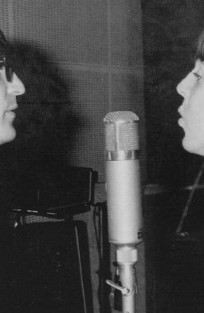 Another unique characteristic is found in the song's introduction, which starts immediately on the downbeat of the first measure and features three-part harmony (actually four voices if you count John’s double-tracked overdub) being sung a cappella. Not one or two, but four full measures are sung in this way to instantly engage your attention. The rhythm track, consisting of acoustic guitar, bass and drums, kicks in on the fifth measure (actually the upstroke of John’s acoustic guitar comes in just before the fifth measure) to finish off the verse. The vocals are found to be just slightly off-key when the instruments come in, which shows that it is very likely that they were singing off of a strummed guitar chord (or such) to get the pitch, rather than an instrumental track being present during the a cappella performance as a guide that was omitted in the mixing stage. George’s electric guitar flourish fills in the gap after the lyrics conclude as a nice segue into the second verse that follows. Another unique characteristic is found in the song's introduction, which starts immediately on the downbeat of the first measure and features three-part harmony (actually four voices if you count John’s double-tracked overdub) being sung a cappella. Not one or two, but four full measures are sung in this way to instantly engage your attention. The rhythm track, consisting of acoustic guitar, bass and drums, kicks in on the fifth measure (actually the upstroke of John’s acoustic guitar comes in just before the fifth measure) to finish off the verse. The vocals are found to be just slightly off-key when the instruments come in, which shows that it is very likely that they were singing off of a strummed guitar chord (or such) to get the pitch, rather than an instrumental track being present during the a cappella performance as a guide that was omitted in the mixing stage. George’s electric guitar flourish fills in the gap after the lyrics conclude as a nice segue into the second verse that follows.
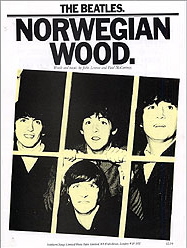 The vocal melody line of the verses has a downward spiral that encapsulates a full octave, not unlike what is heard in the verses of the recently recorded “Norwegian Wood.” This works suitably well with the despondent lyrics that depict the unfortunate existence of this man “living in his nowhere land.” The syncopated guitar riff that follows these lyrics also spirals downward to continue the mood. The vocal melody line of the verses has a downward spiral that encapsulates a full octave, not unlike what is heard in the verses of the recently recorded “Norwegian Wood.” This works suitably well with the despondent lyrics that depict the unfortunate existence of this man “living in his nowhere land.” The syncopated guitar riff that follows these lyrics also spirals downward to continue the mood.
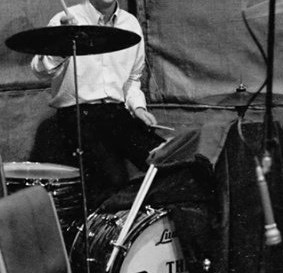 The second verse continues the exact same pattern except for the inclusion of a subtle but full-measure drum roll from Ringo in order to introduce the first bridge. The bridge is also eight measures long but, while all the vocals thus far are sung in three-part harmony, John takes center stage as lead vocalist of the song while Paul and George alter their role to background harmonies singing phrases that include “ooh, la, la, la” as also heard in the soon to be recorded “You Won’t See Me.” As this first bridge winds down, Ringo speeds up his usual rock beat to double time in the eighth measure and then performs a simple drum fill to bring in the instrumental segment of the song. The second verse continues the exact same pattern except for the inclusion of a subtle but full-measure drum roll from Ringo in order to introduce the first bridge. The bridge is also eight measures long but, while all the vocals thus far are sung in three-part harmony, John takes center stage as lead vocalist of the song while Paul and George alter their role to background harmonies singing phrases that include “ooh, la, la, la” as also heard in the soon to be recorded “You Won’t See Me.” As this first bridge winds down, Ringo speeds up his usual rock beat to double time in the eighth measure and then performs a simple drum fill to bring in the instrumental segment of the song.
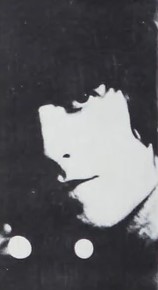 This solo section is actually an instrumental version of the verse highlighted by John and George’s unison guitar work. Almost every phrase of this solo starts with a guitar chord followed by a few notes that etch out an irresistibly memorable melody line. While this instrumental melody is similar to the sung melody of the verses in that it spirals its way down a full octave finishing with an open E string (the lowest note they can play on a guitar), it is unique to the entire song and, as a beautiful touch, George ends it with a high E harmonic that rings into the following verse. This solo section is actually an instrumental version of the verse highlighted by John and George’s unison guitar work. Almost every phrase of this solo starts with a guitar chord followed by a few notes that etch out an irresistibly memorable melody line. While this instrumental melody is similar to the sung melody of the verses in that it spirals its way down a full octave finishing with an open E string (the lowest note they can play on a guitar), it is unique to the entire song and, as a beautiful touch, George ends it with a high E harmonic that rings into the following verse.
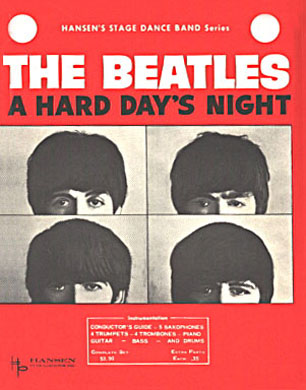 It is quite interesting to note that this solo section has an unusual appearance this early in the song. In The Beatles' discography thus far, as also in pop music in general, an instrumental section in a vocal song most usually surfaces after the entire content of the lyrics, therefore the whole message of the composition has been heard (as found in “Can’t Buy Me Love” and “A Hard Day’s Night” for example). Then afterwards, a repeat of previously heard lyrics, such as a bridge and verse, is heard to round out the arrangement. Not so with “Nowhere Man.” We find ourselves intrigued by the story being conveyed but are just getting to know the subject matter when, with just over a minute of the song complete, we’ve already heard the musical interlude. In this case, we now need to sit back while The Beatles paint the rest of this interesting image for us. It is quite interesting to note that this solo section has an unusual appearance this early in the song. In The Beatles' discography thus far, as also in pop music in general, an instrumental section in a vocal song most usually surfaces after the entire content of the lyrics, therefore the whole message of the composition has been heard (as found in “Can’t Buy Me Love” and “A Hard Day’s Night” for example). Then afterwards, a repeat of previously heard lyrics, such as a bridge and verse, is heard to round out the arrangement. Not so with “Nowhere Man.” We find ourselves intrigued by the story being conveyed but are just getting to know the subject matter when, with just over a minute of the song complete, we’ve already heard the musical interlude. In this case, we now need to sit back while The Beatles paint the rest of this interesting image for us.
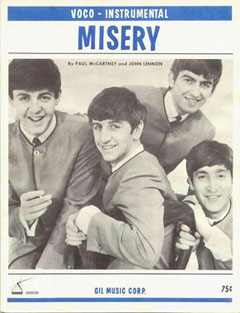 The third verse, with yet another new set of lyrics, then appears with the same musical arrangement. This ends with another Ringo drum roll which appears to be the pattern whenever a bridge follows a verse. This bridge also has a new set of lyrics, something that is unusual for The Beatles up to this point although not unheard of (surprisingly heard in songs as early as “Little Child” and “Misery”). The third verse, with yet another new set of lyrics, then appears with the same musical arrangement. This ends with another Ringo drum roll which appears to be the pattern whenever a bridge follows a verse. This bridge also has a new set of lyrics, something that is unusual for The Beatles up to this point although not unheard of (surprisingly heard in songs as early as “Little Child” and “Misery”).
Since an identical repeat of the second verse follows at this point, the lyrical story begins to recoil, thus going backwards. No doubt with the intention of main points sticking in our minds, important key phrases are heard again, such as “isn’t he a bit like you and me” and, in the following identical repeat of the first bridge, “the world is at your command.”
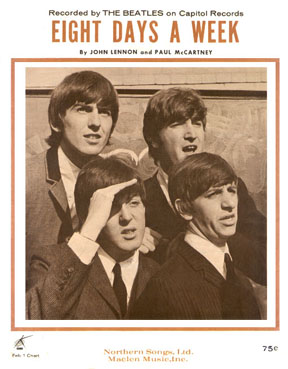 This then brings us back to where we first started, a repeat of the first verse introducing us to the subject under discussion for the entire song. Although it does not have an a cappella first half, the song continues the instrumental pattern heard throughout but is now extended into a sixteen-measure verse that acts as the story’s conclusion. The final phrase, “making all his nowhere plans for nobody,” is repeated three times for emphasis, following the pattern heard many times in their catalog (such as “Please Please Me” and “Eight Days A Week”). This then brings us back to where we first started, a repeat of the first verse introducing us to the subject under discussion for the entire song. Although it does not have an a cappella first half, the song continues the instrumental pattern heard throughout but is now extended into a sixteen-measure verse that acts as the story’s conclusion. The final phrase, “making all his nowhere plans for nobody,” is repeated three times for emphasis, following the pattern heard many times in their catalog (such as “Please Please Me” and “Eight Days A Week”).
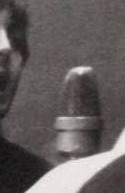 Notable features of this ending include Ringo’s drum roll in the eighth measure as if to introduce a bridge that doesn’t exist. Also, George’s guitar phrase is purposefully altered in the eighth measure and then extended by single climbing notes as a cross-over for the phrase to be repeated two more times. Finally, Paul’s higher harmony grabs the spotlight to accentuate the third time repeated final phrase “making all his nowhere plans for nobody” so the impact of the song’s message can send shivers down your spine (for me, at least). The final downturned notes of George’s guitar phrase emphasizes the sad existence of this pitied person, leaving many with the final image of the crying “Jeremy Hilary Boob” in the animated “Nowhere Man” sequence from the “Yellow Submarine” movie playing in their minds. Notable features of this ending include Ringo’s drum roll in the eighth measure as if to introduce a bridge that doesn’t exist. Also, George’s guitar phrase is purposefully altered in the eighth measure and then extended by single climbing notes as a cross-over for the phrase to be repeated two more times. Finally, Paul’s higher harmony grabs the spotlight to accentuate the third time repeated final phrase “making all his nowhere plans for nobody” so the impact of the song’s message can send shivers down your spine (for me, at least). The final downturned notes of George’s guitar phrase emphasizes the sad existence of this pitied person, leaving many with the final image of the crying “Jeremy Hilary Boob” in the animated “Nowhere Man” sequence from the “Yellow Submarine” movie playing in their minds.
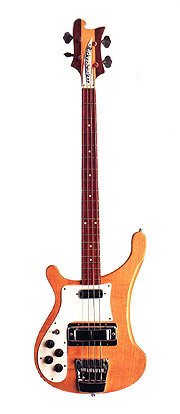 John plays up the singer/songwriter role perfectly in this “folk rock” depiction, strumming acoustic guitar as the song’s rhythm instrument. His vocal work portrays the loneliness and downcast nature of the lyrics to a tee, while his unison lead guitar work with George in the solo is performed unerringly. John plays up the singer/songwriter role perfectly in this “folk rock” depiction, strumming acoustic guitar as the song’s rhythm instrument. His vocal work portrays the loneliness and downcast nature of the lyrics to a tee, while his unison lead guitar work with George in the solo is performed unerringly.
Paul’s bass work is quite busy but impressive, noticeable only when listened for. It appears in the mix as so to not detract from the simple impact the message of the song calls for. His higher harmonies throughout are perfectly delivered and are the intrinsic element that adds to the irresistible sheen of the harmonies in the song as a whole.
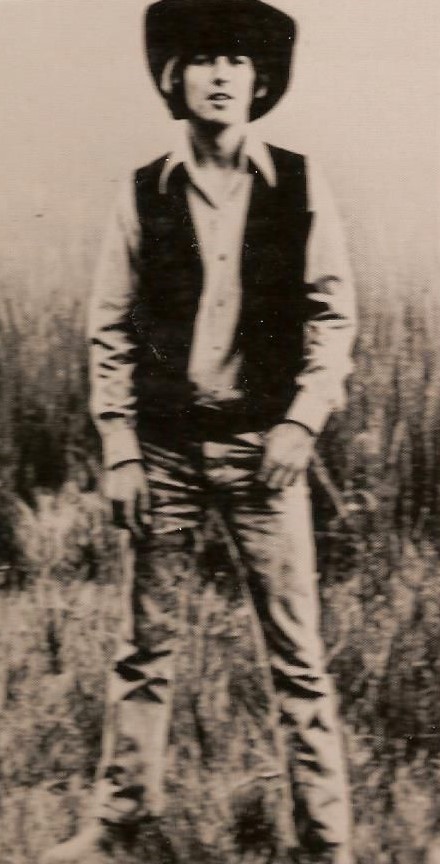 Harrison’s lower harmonies also add to the flavor of this vocal arrangement and were delivered faultlessly. His guitar phrases also suited the despondent yet optimistic message of the song very well. Ringo’s simple drum pattern works very well in this setting, adding the necessary frills where needed, such as the drum rolls before the bridges and also the fills and cymbal crashes that he appropriately sprinkles throughout the recording. Harrison’s lower harmonies also add to the flavor of this vocal arrangement and were delivered faultlessly. His guitar phrases also suited the despondent yet optimistic message of the song very well. Ringo’s simple drum pattern works very well in this setting, adding the necessary frills where needed, such as the drum rolls before the bridges and also the fills and cymbal crashes that he appropriately sprinkles throughout the recording.
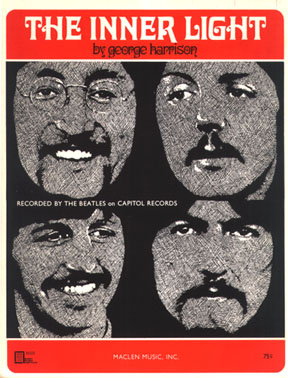 It’s quite unfortunate that many listeners and authors seem only to focus on the negative or weary weight of the lyrical subject matter found in “Nowhere Man.” While the final repeated phrase emphasizes the futility of the “nowhere plans” of this fictional character, the overall thrust, however, appears to be one of optimism and encouragement rather than despair. In fact, one can see the general message of the ancient Chinese writing, the “Tao Te Ching,” embedded in these lines. While probably not studied in this work, John Lennon appears to pre-date George Harrison’s composition “The Inner Light,” which was admittedly inspired by this 2,500 year old writing, by about two-and-a-half years. It’s quite unfortunate that many listeners and authors seem only to focus on the negative or weary weight of the lyrical subject matter found in “Nowhere Man.” While the final repeated phrase emphasizes the futility of the “nowhere plans” of this fictional character, the overall thrust, however, appears to be one of optimism and encouragement rather than despair. In fact, one can see the general message of the ancient Chinese writing, the “Tao Te Ching,” embedded in these lines. While probably not studied in this work, John Lennon appears to pre-date George Harrison’s composition “The Inner Light,” which was admittedly inspired by this 2,500 year old writing, by about two-and-a-half years.
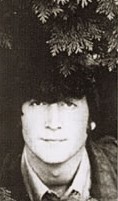 While John admits in interviews that the song is “probably about myself,” he takes the position of identifying the “nowhere man” as a definite individual that he is describing to us in the song’s verses, interpreted by many as distinguishing general mankind today as a whole. They are said to be not having “a point of view” about what’s going on in the world, not even knowing their own destination. Including himself and us in the mix, he sadly adds the thought that we’re not that much different ourselves. While John admits in interviews that the song is “probably about myself,” he takes the position of identifying the “nowhere man” as a definite individual that he is describing to us in the song’s verses, interpreted by many as distinguishing general mankind today as a whole. They are said to be not having “a point of view” about what’s going on in the world, not even knowing their own destination. Including himself and us in the mix, he sadly adds the thought that we’re not that much different ourselves.
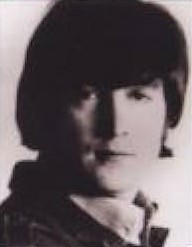 The bridges of the song, however, depict him actually addressing the “nowhere man,” telling him “you don’t know what you’re missing” and, if he would only realize, he could summon “the world” to give him what he needs to achieve a fulfilling life beyond his wildest imagination. But, unfortunately, John continues to describe him to us as just seeing “what he wants to see.” John interrupts the flow to address the man personally again, asking “do you see me at all?” Encouragingly, John continues with “take your time, don’t hurry,” insisting that others are more than willing to ‘lend him a hand’ if he would only see that they were there for him. The bridges of the song, however, depict him actually addressing the “nowhere man,” telling him “you don’t know what you’re missing” and, if he would only realize, he could summon “the world” to give him what he needs to achieve a fulfilling life beyond his wildest imagination. But, unfortunately, John continues to describe him to us as just seeing “what he wants to see.” John interrupts the flow to address the man personally again, asking “do you see me at all?” Encouragingly, John continues with “take your time, don’t hurry,” insisting that others are more than willing to ‘lend him a hand’ if he would only see that they were there for him.
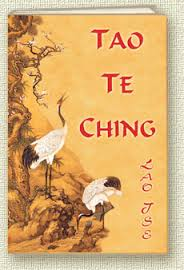 Lennon’s insistence to “please listen,” insinuates that he is knowledgeable about something that can help this fictional character which, many feel, signifies mankind. As the “Tao Te Ching” advises in an interpretation of the 70th verse: “My teachings are very easy to understand and very easy to practice; yet so few in this world understand, and so few are able to practice.” An interpretation of the 72nd verse states: “Do not limit the view of yourself…Do not resist the natural course of your life. In this way you will never weary of this world.” Lennon’s insistence to “please listen,” insinuates that he is knowledgeable about something that can help this fictional character which, many feel, signifies mankind. As the “Tao Te Ching” advises in an interpretation of the 70th verse: “My teachings are very easy to understand and very easy to practice; yet so few in this world understand, and so few are able to practice.” An interpretation of the 72nd verse states: “Do not limit the view of yourself…Do not resist the natural course of your life. In this way you will never weary of this world.”
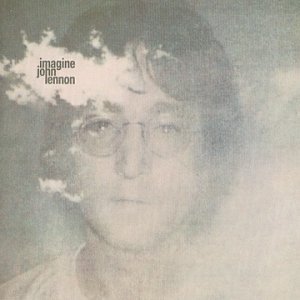 While not trying to immortalize John Lennon too much as a sage of divine wisdom, the above paragraph emphasizes how the evidence suggests that the lyrics of “Nowhere Man” are much more inspirational than downcast, a precursor to his thoughts and desires of a peaceful world that became his dominant focus in future years. While not trying to immortalize John Lennon too much as a sage of divine wisdom, the above paragraph emphasizes how the evidence suggests that the lyrics of “Nowhere Man” are much more inspirational than downcast, a precursor to his thoughts and desires of a peaceful world that became his dominant focus in future years.
American Releases
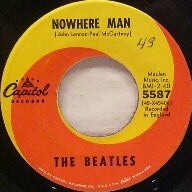 When Capitol Records received the master tapes for the “Rubber Soul” album in November of 1965, they continued their habit of omitting one song that they thought would go over well as their next single. They wisely chose “Nowhere Man,” so instead of it appearing on the “Rubber Soul” album as it did in Britain, it was first premiered in the US on February 15th, 1966 as their next single, paired with another album track “What Goes On?” as the b-side. The single went to #3 on the Billboard Hot 100 and became their next million-seller. When Capitol Records received the master tapes for the “Rubber Soul” album in November of 1965, they continued their habit of omitting one song that they thought would go over well as their next single. They wisely chose “Nowhere Man,” so instead of it appearing on the “Rubber Soul” album as it did in Britain, it was first premiered in the US on February 15th, 1966 as their next single, paired with another album track “What Goes On?” as the b-side. The single went to #3 on the Billboard Hot 100 and became their next million-seller.
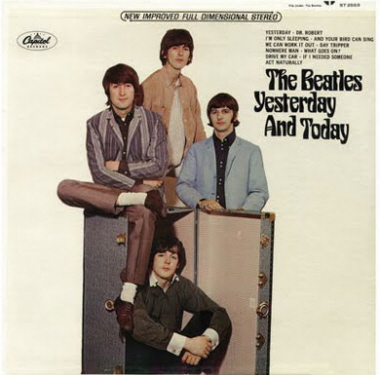 By June 14th, 1966, it was time for “Nowhere Man” to be included on an American album. “Yesterday…And Today” was released on this date with “Nowhere Man” being only one of four top five American hits contained on this blockbuster album. It raced to the number one spot on the Billboard album charts and stayed there for five straight weeks. "Yesterday...And Today" was then released on January 21st, 2014, as an individual compact disc, both the mono and stereo versions of the album being included on a single CD. Incidentally, this release featured both the "trunk" cover and the "butcher" cover. By June 14th, 1966, it was time for “Nowhere Man” to be included on an American album. “Yesterday…And Today” was released on this date with “Nowhere Man” being only one of four top five American hits contained on this blockbuster album. It raced to the number one spot on the Billboard album charts and stayed there for five straight weeks. "Yesterday...And Today" was then released on January 21st, 2014, as an individual compact disc, both the mono and stereo versions of the album being included on a single CD. Incidentally, this release featured both the "trunk" cover and the "butcher" cover.
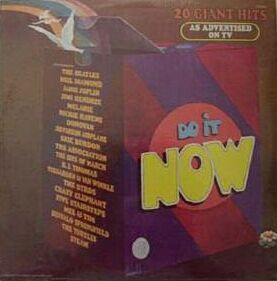 Sometime in 1970, an interesting compilation album was advertised on US TV and made available in stores under the name “Do It Now – 20 Giant Hits.” This album was released in conjunction with “The Do It Now Foundation” from Hollywood, California, this being an organization fighting drug abuse. First released on the “First Vibration” label, and then distributed by “Ronco Teleproducts,” the album contained “Nowhere Man” as the first track, followed by various artists such as Jimi Hendrix, Donovon and Jefferson Airplane. Sometime in 1970, an interesting compilation album was advertised on US TV and made available in stores under the name “Do It Now – 20 Giant Hits.” This album was released in conjunction with “The Do It Now Foundation” from Hollywood, California, this being an organization fighting drug abuse. First released on the “First Vibration” label, and then distributed by “Ronco Teleproducts,” the album contained “Nowhere Man” as the first track, followed by various artists such as Jimi Hendrix, Donovon and Jefferson Airplane.
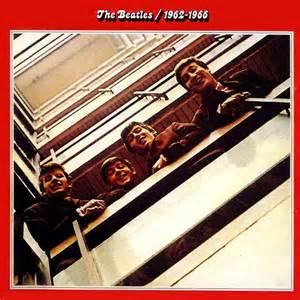 On April 2nd, 1973, the first official “greatest hits” package by The Beatles was released in America, “The Beatles/1962-1966” (“The Red Album”). This featured the original 1965 stereo mix of “Nowhere Man,” but it was replaced with the new 1986 stereo mix when it was first released on compact disc in 1993. This mix was also included on the set when it was remastered and re-released on October 18th, 2010. On April 2nd, 1973, the first official “greatest hits” package by The Beatles was released in America, “The Beatles/1962-1966” (“The Red Album”). This featured the original 1965 stereo mix of “Nowhere Man,” but it was replaced with the new 1986 stereo mix when it was first released on compact disc in 1993. This mix was also included on the set when it was remastered and re-released on October 18th, 2010.
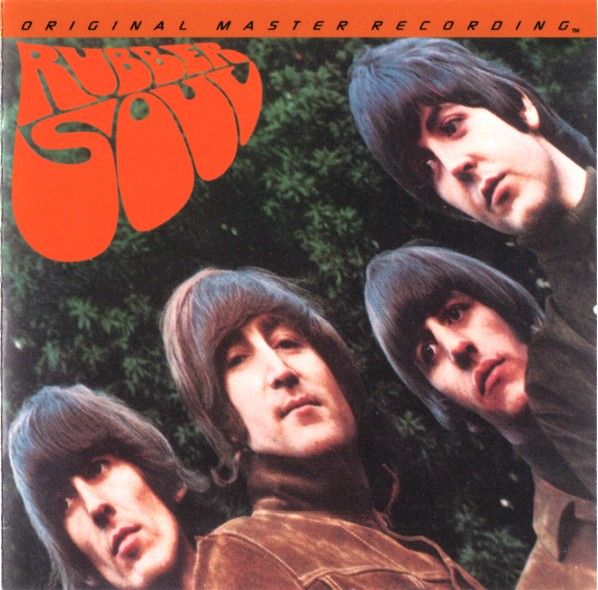 The first time the original British "Rubber Soul” album was made available in America was the "Original Master Recording" vinyl edition released through Mobile Fidelity Sound Lab in June of 1984. This album included "Nowhere Man" and was prepared utilizing half-speed mastering technology from the original master tape on loan from EMI. This version of the album was only available for a short time and is quite collectible today. The first time the original British "Rubber Soul” album was made available in America was the "Original Master Recording" vinyl edition released through Mobile Fidelity Sound Lab in June of 1984. This album included "Nowhere Man" and was prepared utilizing half-speed mastering technology from the original master tape on loan from EMI. This version of the album was only available for a short time and is quite collectible today.
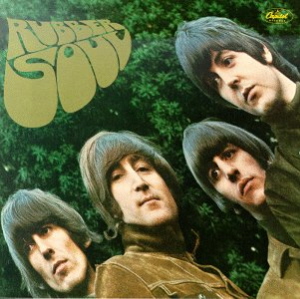 The British “Rubber Soul” album got its first compact disc release on April 30th, 1987, the vinyl edition coming out on July 21st, 1987. The newly created 1986 stereo mix was featured here, as it also was when the remastered album was released on September 9th, 2009 on CD and on vinyl on November 13th, 2012. The British “Rubber Soul” album got its first compact disc release on April 30th, 1987, the vinyl edition coming out on July 21st, 1987. The newly created 1986 stereo mix was featured here, as it also was when the remastered album was released on September 9th, 2009 on CD and on vinyl on November 13th, 2012.
Then on June 30th, 1992, Capitol released the original 1965 mono mix of "Nowhere Man" on compact disc for the first time within the box set "Compact Disc EP Collection." This set was put together to commemorate all of the original British EP releases, the last one of 1966 being the four-track "Nowhere Man" disc compiled from the current "Rubber Soul" album.
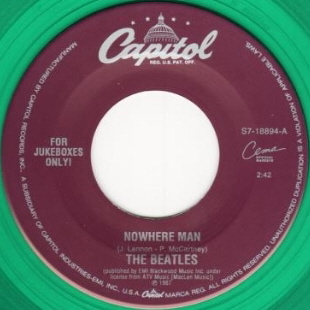 On January 24th, 1996, the “Nowhere Man” single was re-released by Capitol with the legend “For Jukeboxes Only” printed on the label. This limited edition “Cema Series” release was printed on green vinyl and is rather hard to find today. On January 24th, 1996, the “Nowhere Man” single was re-released by Capitol with the legend “For Jukeboxes Only” printed on the label. This limited edition “Cema Series” release was printed on green vinyl and is rather hard to find today.
On September 13th, 1999, Apple Records released the album “Yellow Submarine Songtrack,” which was compiled to coincide with the re-release of the “Yellow Submarine” film that year. The sonically improved stereo mix mentioned earlier is contained therein, giving yet another example of what current technology can do to improve The Beatles catalog.
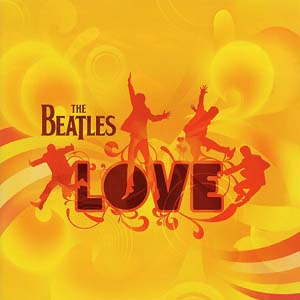 A partial release of the song is worthy of mention here. On November 20th, 2006, the Cirque du Soleil production of The Beatles show “Love” released its soundtrack album. The track “Something” ends with a montage of songs including “Blue Jay Way” and the vocal harmonies of the first verse of “Nowhere Man” in the background. A partial release of the song is worthy of mention here. On November 20th, 2006, the Cirque du Soleil production of The Beatles show “Love” released its soundtrack album. The track “Something” ends with a montage of songs including “Blue Jay Way” and the vocal harmonies of the first verse of “Nowhere Man” in the background.
For those who want to own the original 1965 mono and stereo mixes, they were made available to us all on the box set “The Beatles In Mono,” the compact disc edition being released on September 9th, 2009 and the vinyl edition first coming out on September 9th, 2014.
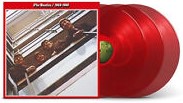 A new 50th Anniversay edition of the compilation album "The Beatles / 1962 - 1966" (aka "The Red Album") was released on November 10th, 2023, the newly created AI mix of "Nowhere Man," as detailed above, being featured here. This expanded release included 12 additional songs for a total of 38 tracks, and was made available as a double CD and as a triple vinyl release on both black and red vinyl. A new 50th Anniversay edition of the compilation album "The Beatles / 1962 - 1966" (aka "The Red Album") was released on November 10th, 2023, the newly created AI mix of "Nowhere Man," as detailed above, being featured here. This expanded release included 12 additional songs for a total of 38 tracks, and was made available as a double CD and as a triple vinyl release on both black and red vinyl.
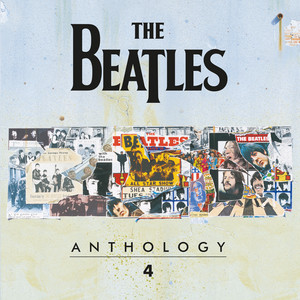 On November 21st, 2025, "Anthology 4" was released on both CD and vinyl, this LP also being made available within the "Anthology Collection" box set on CD and vinyl. "Take two" of "Nowhere Man" as recorded at EMI Studio Two on October 21st, 1965, as detailed above, was included on this release. On November 21st, 2025, "Anthology 4" was released on both CD and vinyl, this LP also being made available within the "Anthology Collection" box set on CD and vinyl. "Take two" of "Nowhere Man" as recorded at EMI Studio Two on October 21st, 1965, as detailed above, was included on this release.
 The Empire Theatre in Liverpool
|
Live Performances
 Only two songs from the British “Rubber Soul” album were ever performed live by The Beatles: “If I Needed Someone” and “Nowhere Man.” Their very last British tour included both of these songs, which began on December 3rd, 1965 to coincide with the UK release of their album and only lasted until December 12th of that year. The highlight of this brief tour was undoubtedly their last performance in Liverpool at the Empire Theatre on December 5th. Only two songs from the British “Rubber Soul” album were ever performed live by The Beatles: “If I Needed Someone” and “Nowhere Man.” Their very last British tour included both of these songs, which began on December 3rd, 1965 to coincide with the UK release of their album and only lasted until December 12th of that year. The highlight of this brief tour was undoubtedly their last performance in Liverpool at the Empire Theatre on December 5th.
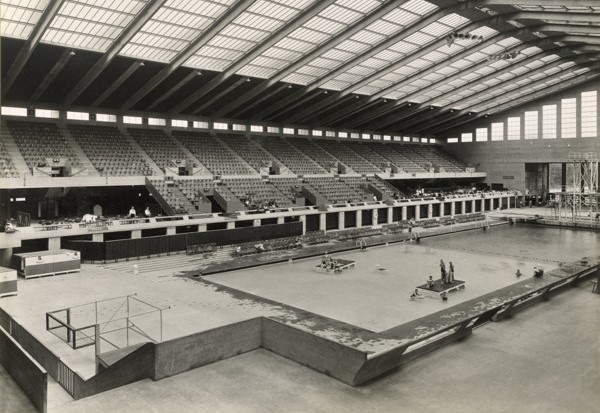 Then on May 1st, 1966, The Beatles played their fourth and final appearance on the “New Musical Express Annual Poll-Winners’ All-Star Concert” and included “Nowhere Man” in their five song set. This show at the Empire Pool in Wembley was actually their last ever live British concert, apart from their Apple rooftop performance on January 30th, 1969. Then on May 1st, 1966, The Beatles played their fourth and final appearance on the “New Musical Express Annual Poll-Winners’ All-Star Concert” and included “Nowhere Man” in their five song set. This show at the Empire Pool in Wembley was actually their last ever live British concert, apart from their Apple rooftop performance on January 30th, 1969.
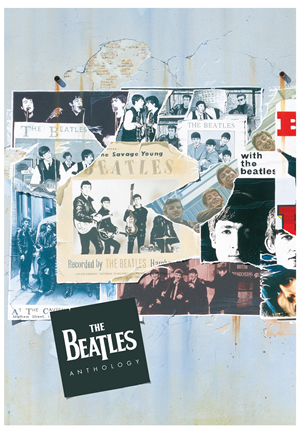 Their international tour of 1966, which also featured “Nowhere Man,” began on June 24th, 1966 in Munich, West Germany, and ended on July 4th with their infamous Philippines show. Not to be forgotten is their return to Hamburg, Germany and their filmed Japan performances that they explained about in detail on their “Anthology” documentary. Their international tour of 1966, which also featured “Nowhere Man,” began on June 24th, 1966 in Munich, West Germany, and ended on July 4th with their infamous Philippines show. Not to be forgotten is their return to Hamburg, Germany and their filmed Japan performances that they explained about in detail on their “Anthology” documentary.
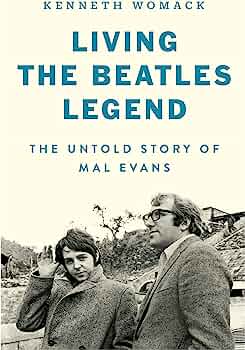 August 12th, 1966, began their final American tour in Chicago, the latter of their two August 25th shows at Seattle Center Coliseum being remembered by future 16-year-old Heart singer Ann Wilson. She distictly recalls George breaking a guitar string during their performance of "Nowhere Man," as well as "this big guy, Mal Evans, carrying the famous bass drum with 'The Beatles' on it onto the stage to set it up" before the show, as she related in Kenneth Womack's 2023 book "Living The Beatles Legend. "The roof just blew off the place with the roar of the crowd. Everybody knew Mal." Other high-points of the final American tour being in Cleveland, Philadelphia, Toronto, Memphis, their return to Shea Stadium in New York City, and their final concert of their career at Candlestick Park in San Francisco on August 29th, 1966. All of these shows included “Nowhere Man” as well. August 12th, 1966, began their final American tour in Chicago, the latter of their two August 25th shows at Seattle Center Coliseum being remembered by future 16-year-old Heart singer Ann Wilson. She distictly recalls George breaking a guitar string during their performance of "Nowhere Man," as well as "this big guy, Mal Evans, carrying the famous bass drum with 'The Beatles' on it onto the stage to set it up" before the show, as she related in Kenneth Womack's 2023 book "Living The Beatles Legend. "The roof just blew off the place with the roar of the crowd. Everybody knew Mal." Other high-points of the final American tour being in Cleveland, Philadelphia, Toronto, Memphis, their return to Shea Stadium in New York City, and their final concert of their career at Candlestick Park in San Francisco on August 29th, 1966. All of these shows included “Nowhere Man” as well.
Conclusion
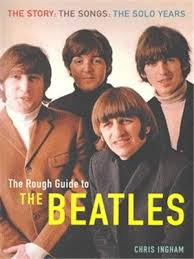 While the lyrics to “Nowhere Man” may not have been as well thought out as we would like to think they were, “Lennon’s mid-career, mid-marriage, mid-suburbia malaise,” as Chris Ingham describes the song in “The Rough Guide To The Beatles,” resulted in a groundbreaking song that appears ever more lyrically deep and all-encompassing in retrospect. John Lennon was undoubtedly a thinking person, the Beatle who spearheaded the trend of pouring out his thoughts, reflections and emotions in his compositions. Paul, who described himself as “a big Lennon fan” during the height of The Beatles fame, began to follow suit to great effect. But it was John who was eager to get past the "formula pop song" and, once he had, he never looked back. While the lyrics to “Nowhere Man” may not have been as well thought out as we would like to think they were, “Lennon’s mid-career, mid-marriage, mid-suburbia malaise,” as Chris Ingham describes the song in “The Rough Guide To The Beatles,” resulted in a groundbreaking song that appears ever more lyrically deep and all-encompassing in retrospect. John Lennon was undoubtedly a thinking person, the Beatle who spearheaded the trend of pouring out his thoughts, reflections and emotions in his compositions. Paul, who described himself as “a big Lennon fan” during the height of The Beatles fame, began to follow suit to great effect. But it was John who was eager to get past the "formula pop song" and, once he had, he never looked back.
Song Summary
“Nowhere Man”
Written by: John Lennon / Paul McCartney
-
Song Written: September / October, 1965
-
Song Recorded: October 22, 1965
-
First US Release Date: February, 15, 1966
-
US Single Release: Capitol #5587
-
Highest Chart Position: #3
-
-
British Album Release: Parlophone # PCS 3075 “Rubber Soul”
-
Length: 2:40
-
Key: E major
-
Producer: George Martin
-
Engineers: Norman Smith, Ken Scott
Instrumentation (most likely):
-
John Lennon - Lead Vocals, Rhythm Guitar (1964 Gibson J-160E), Guitar solo (1961 Sonic Blue Fender Stratocaster)
-
Paul McCartney - Bass Guitar (1964 Rickenbacker 4001S), Harmony Vocals
-
George Harrison – Lead Guitar (1961 Sonic Blue Fender Stratocaster), Harmony Vocals
-
Ringo Starr – Drums (1965 Ludwig Super Classic Black Oyster Pearl)
Written and compiled by Dave Rybaczewski
|
IF YOU WOULD LIKE TO MAKE A DONATION TO KEEP THIS WEBSITE UP AND RUNNING, PLEASE CLICK BELOW!
Sign Up Below for our MONTHLY BEATLES TRIVIA QUIZ!
|